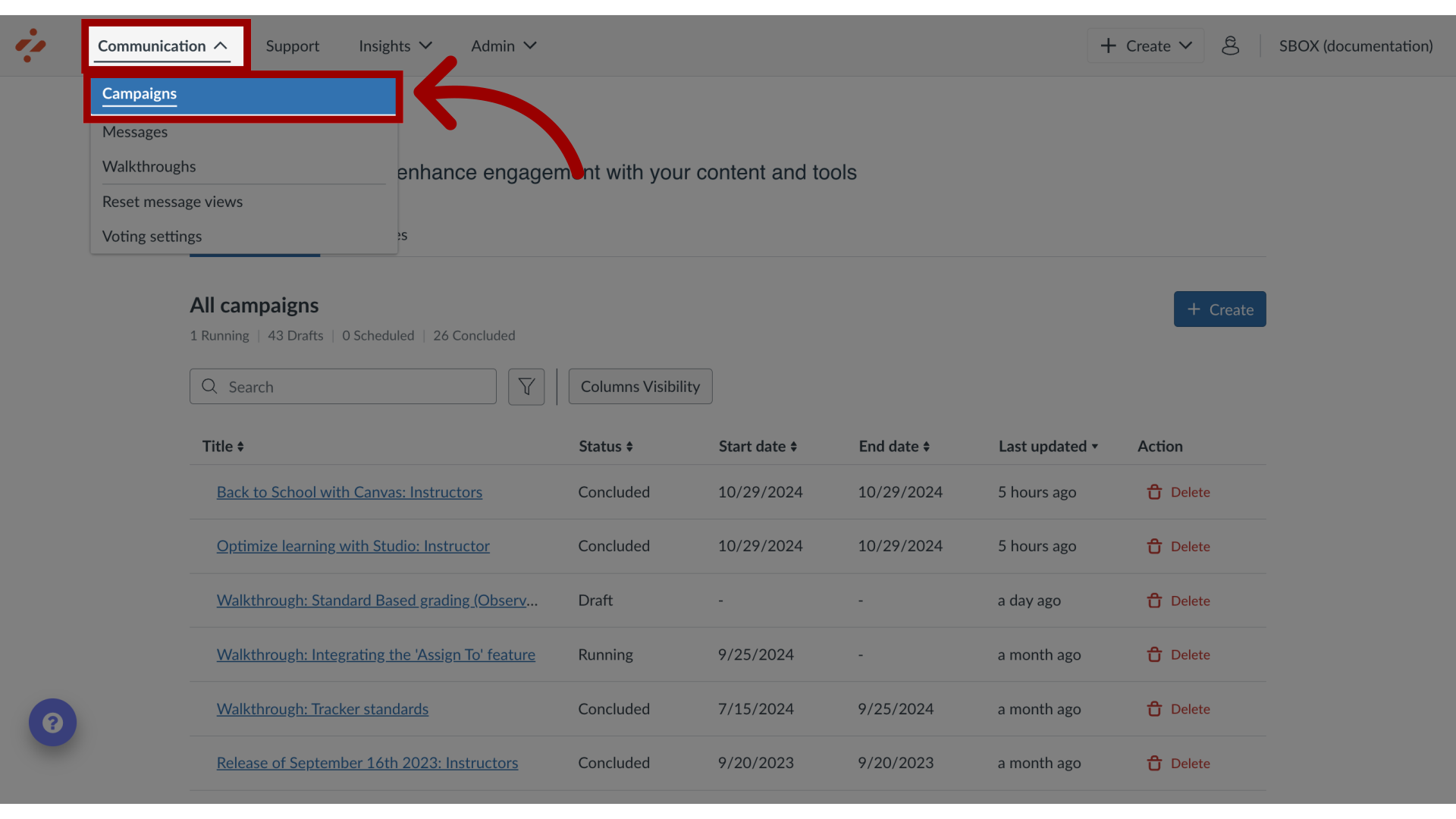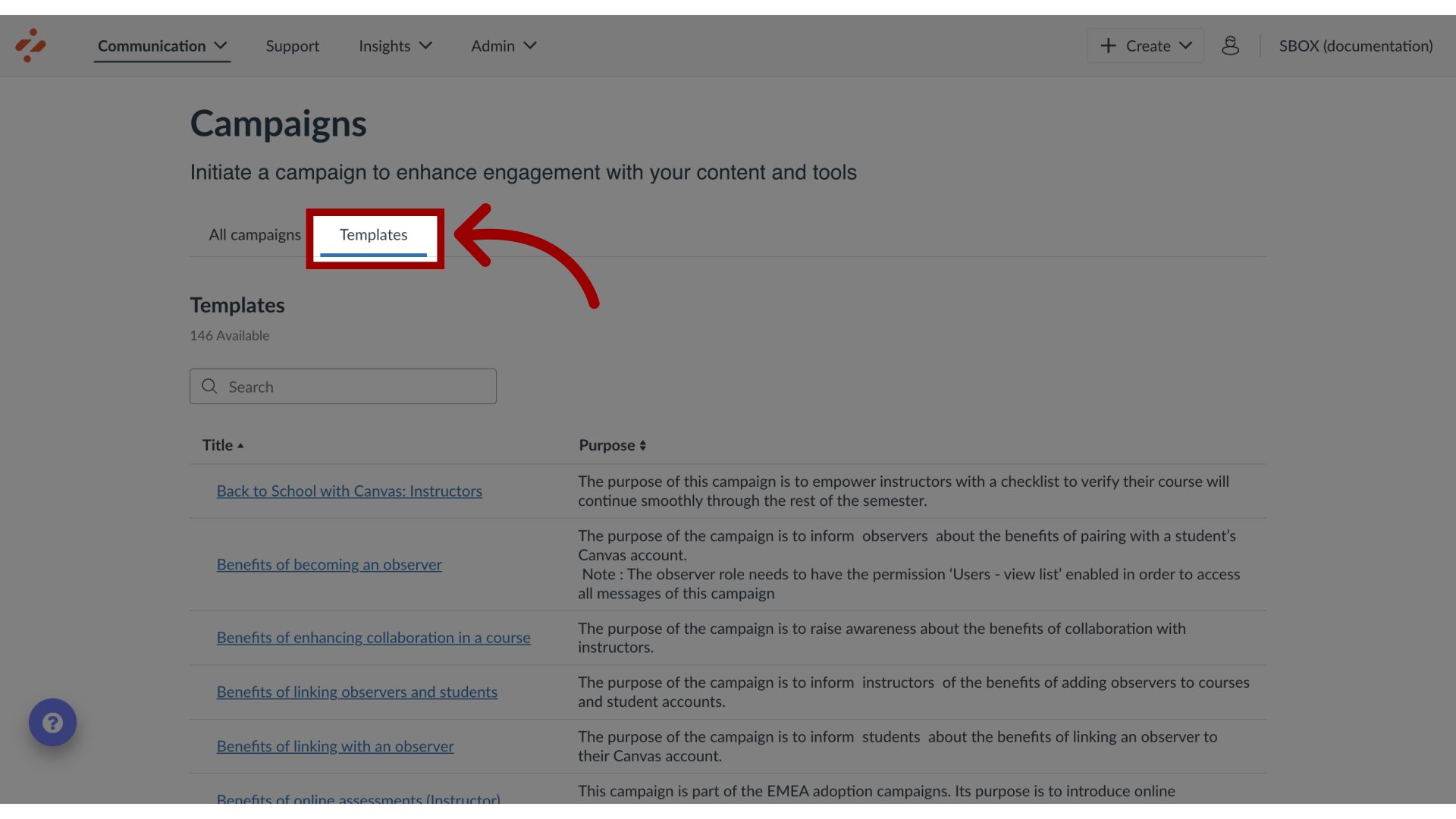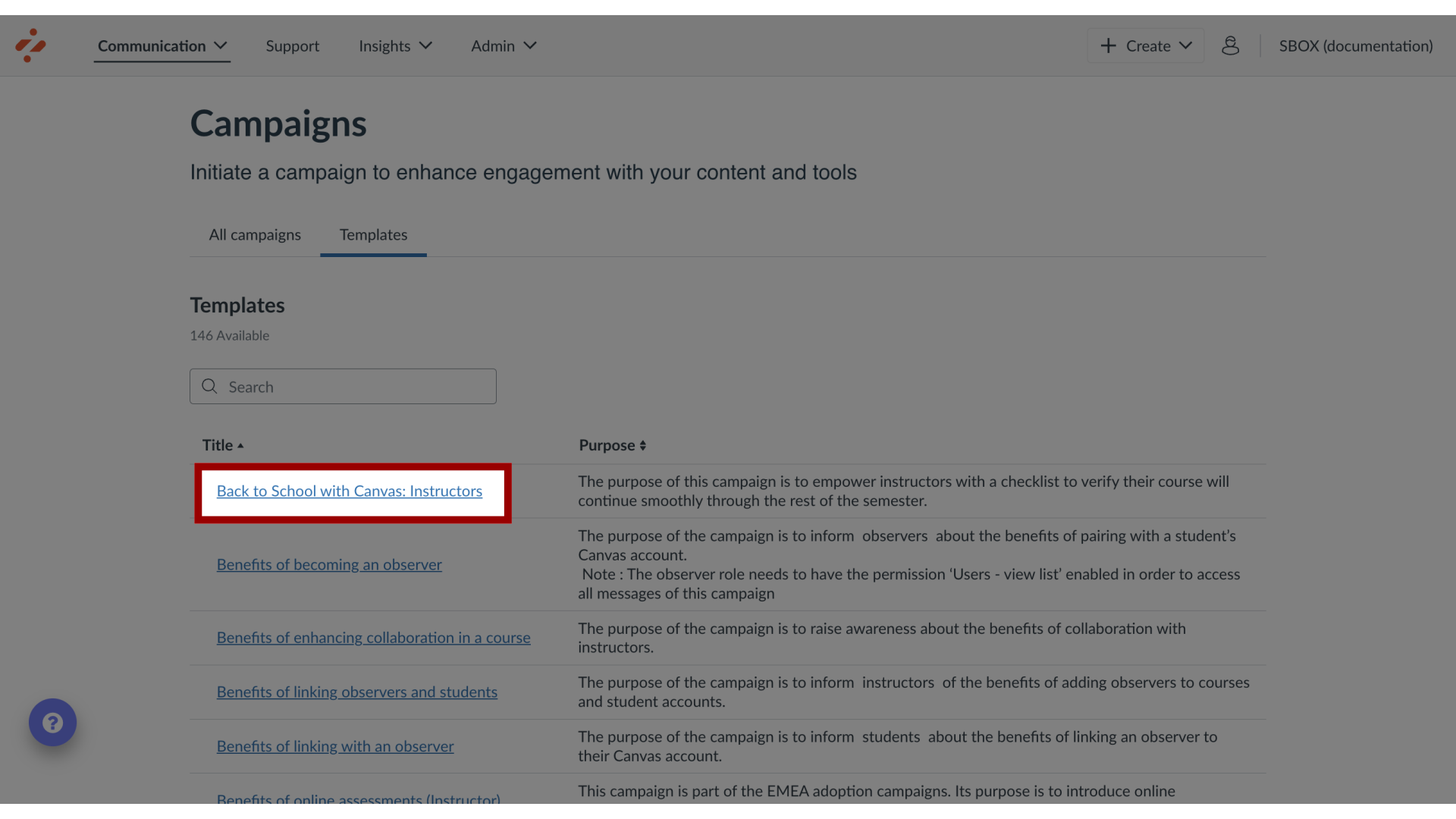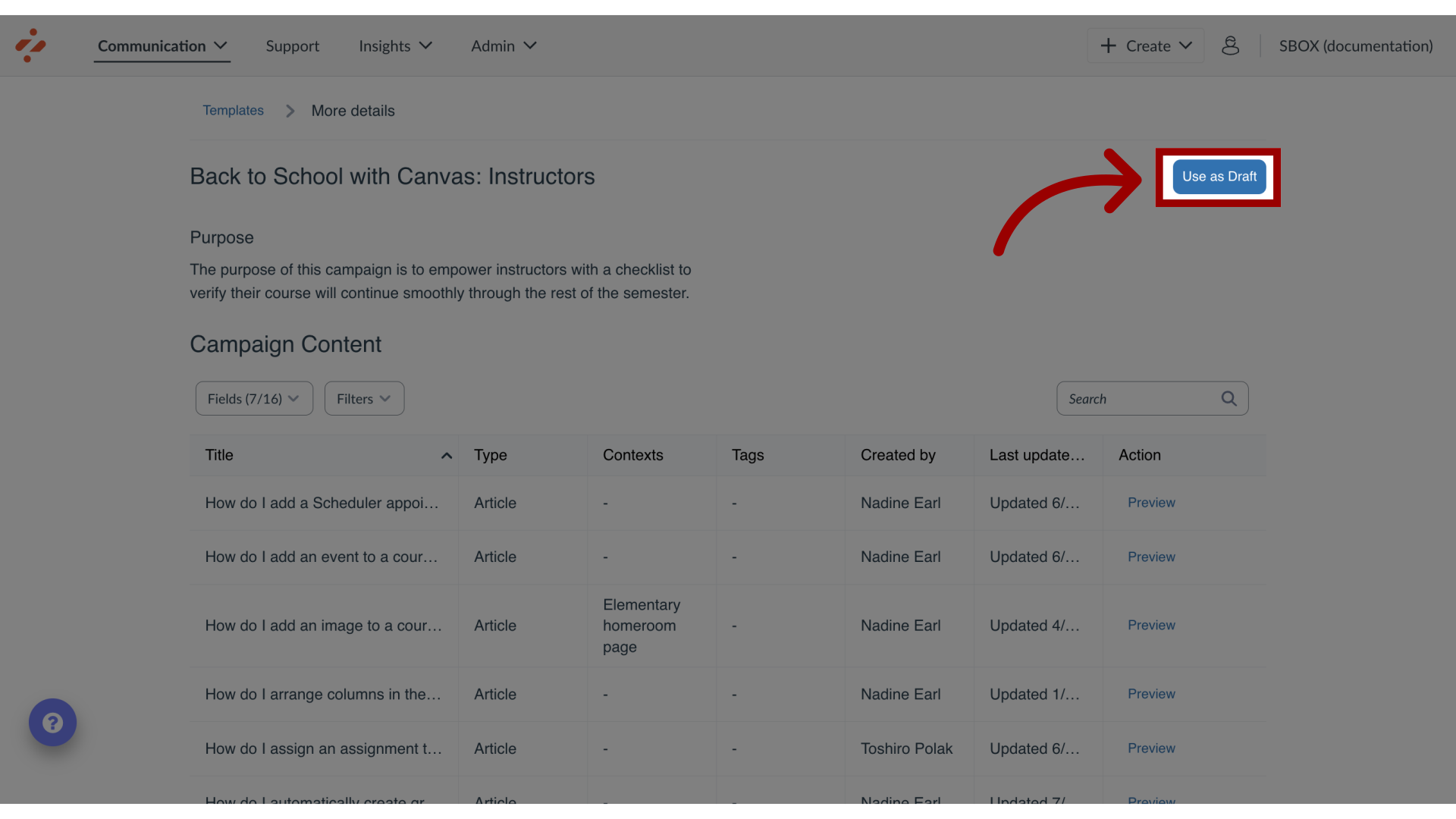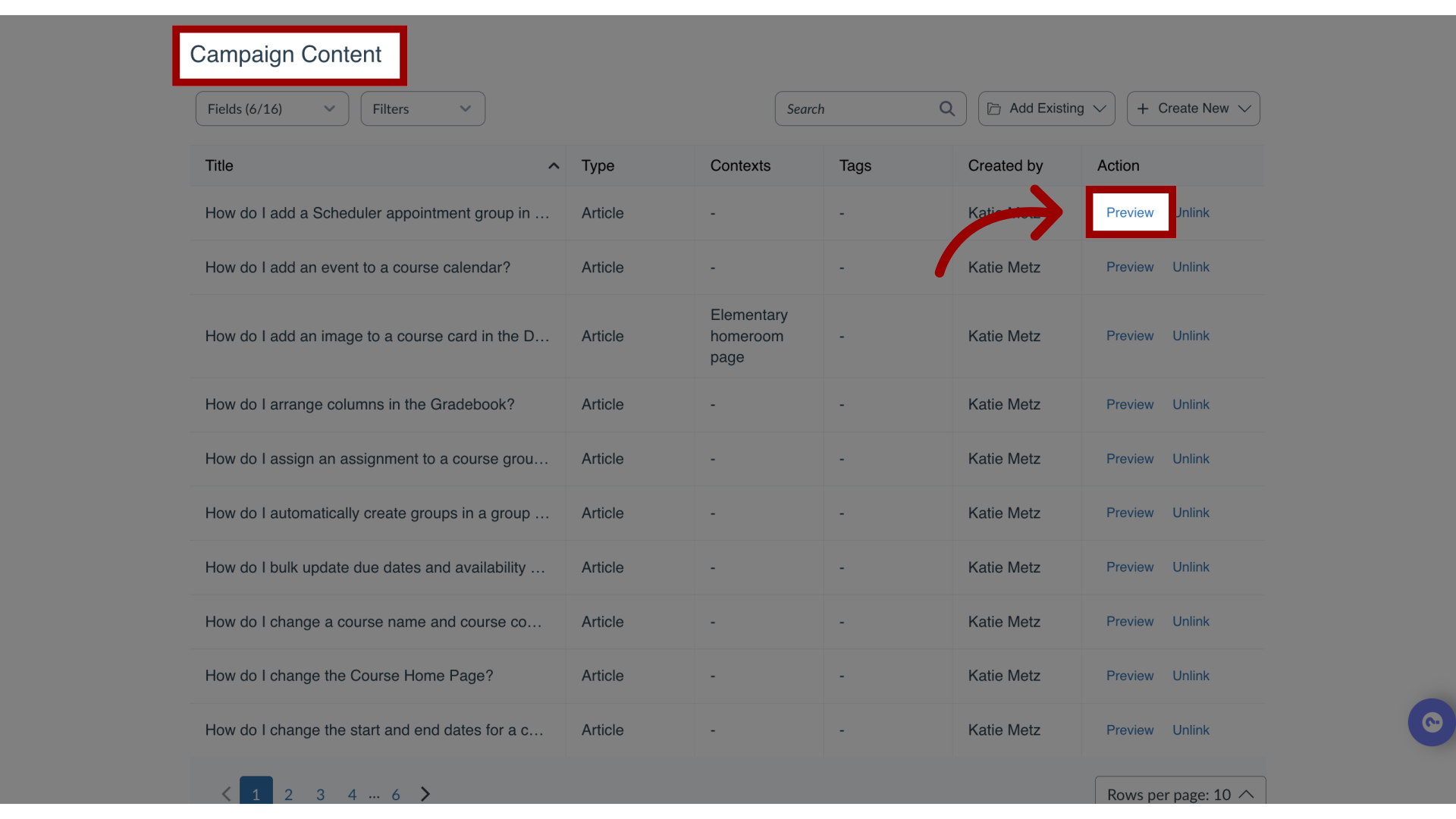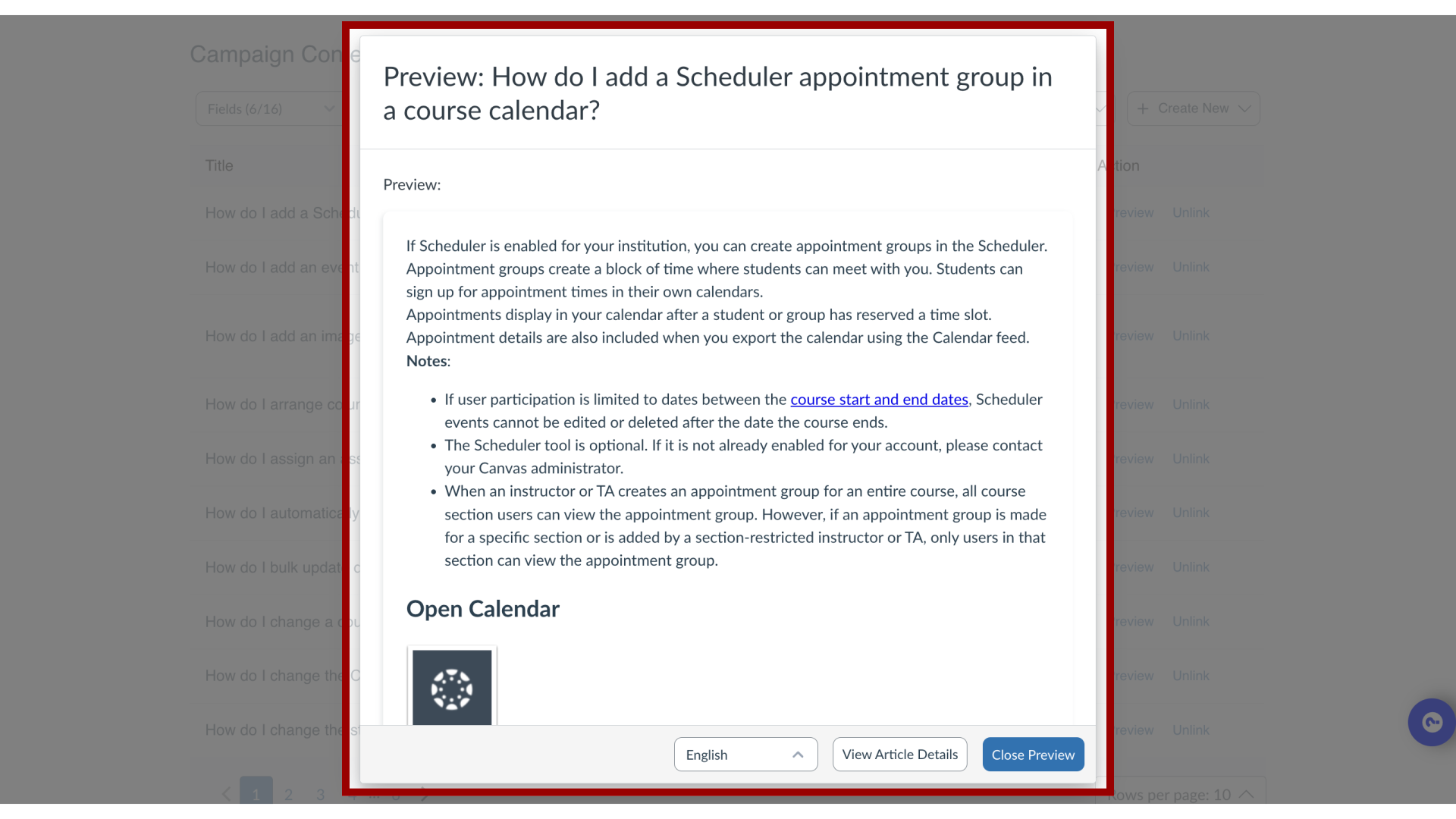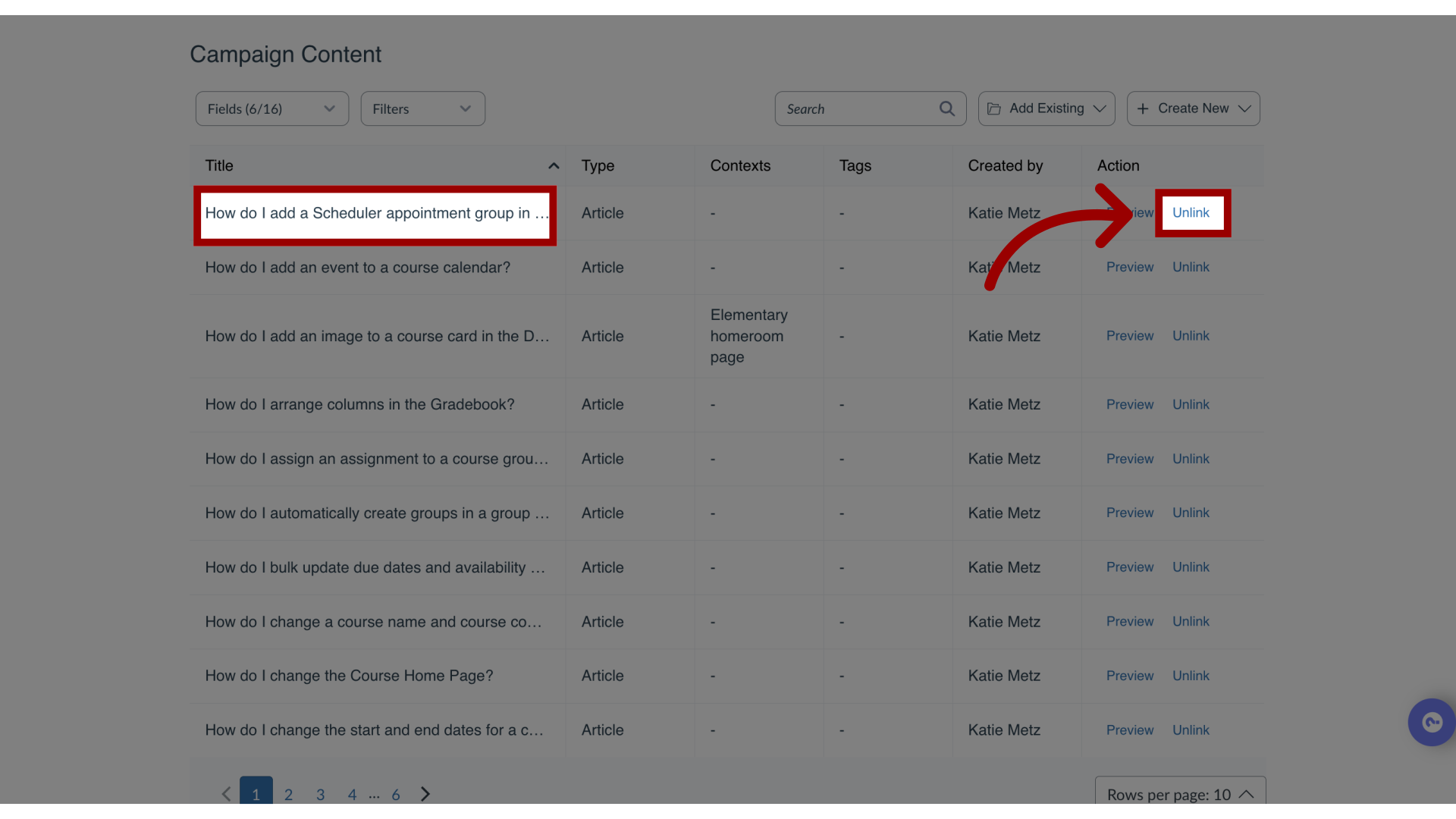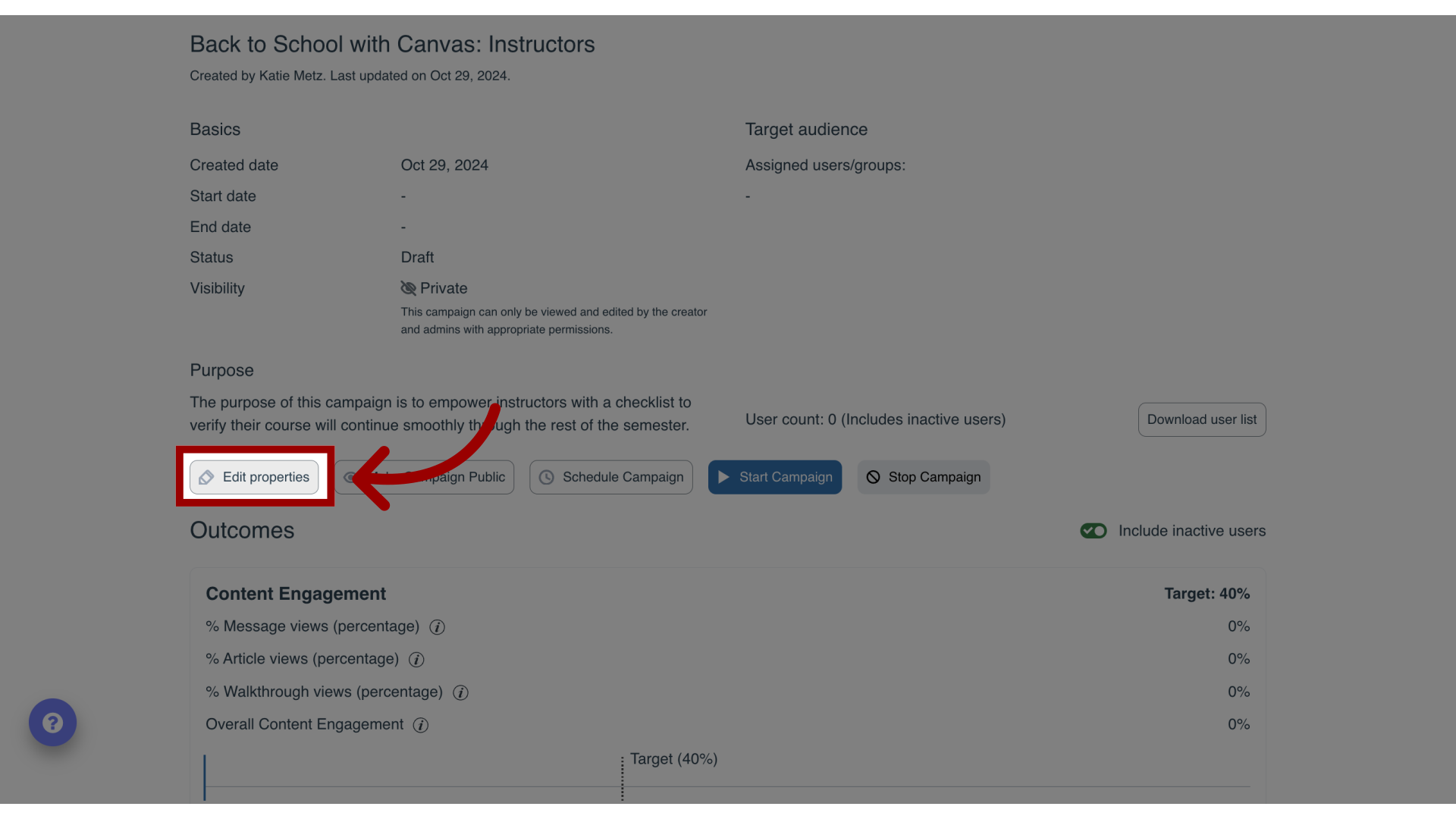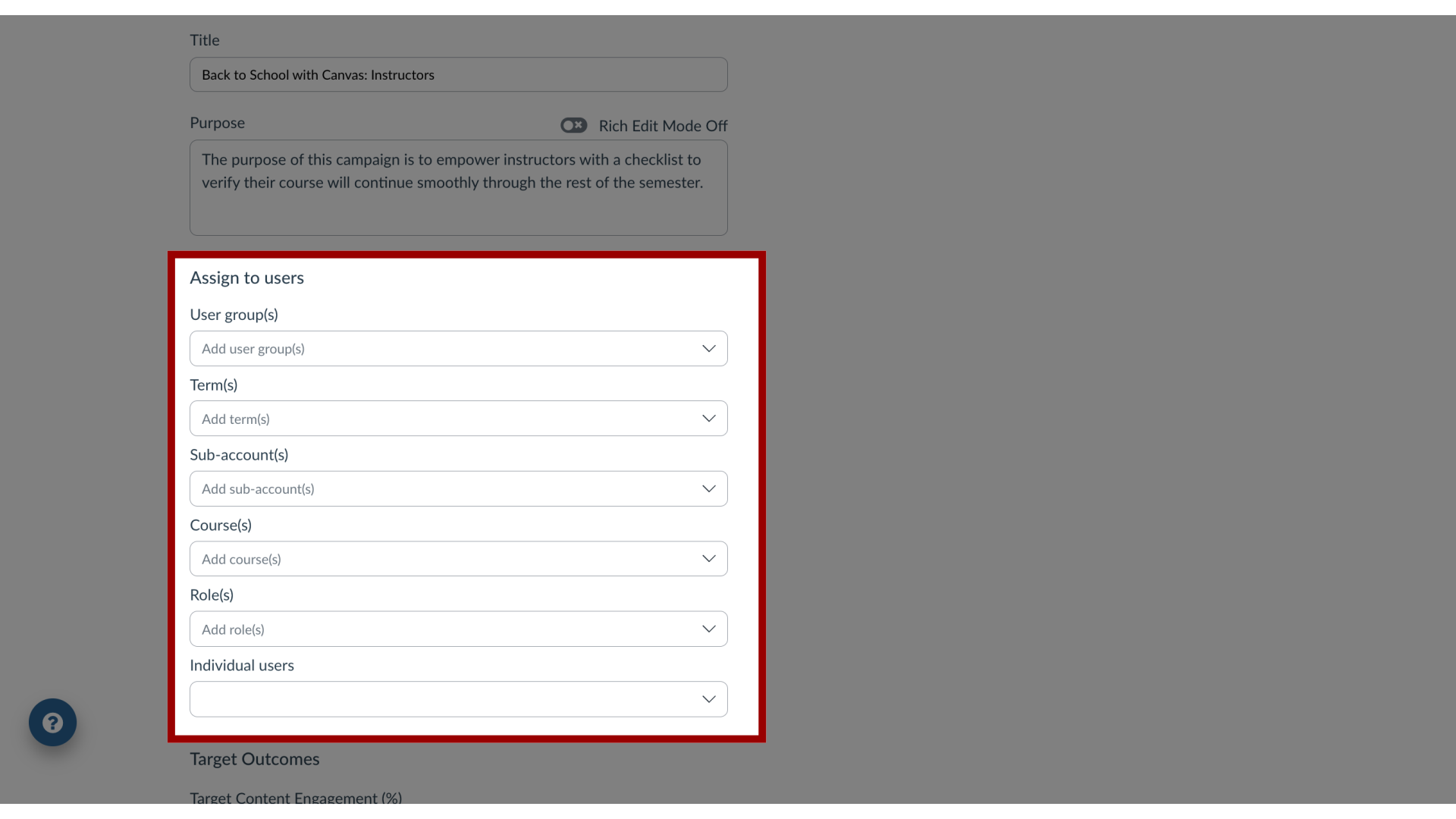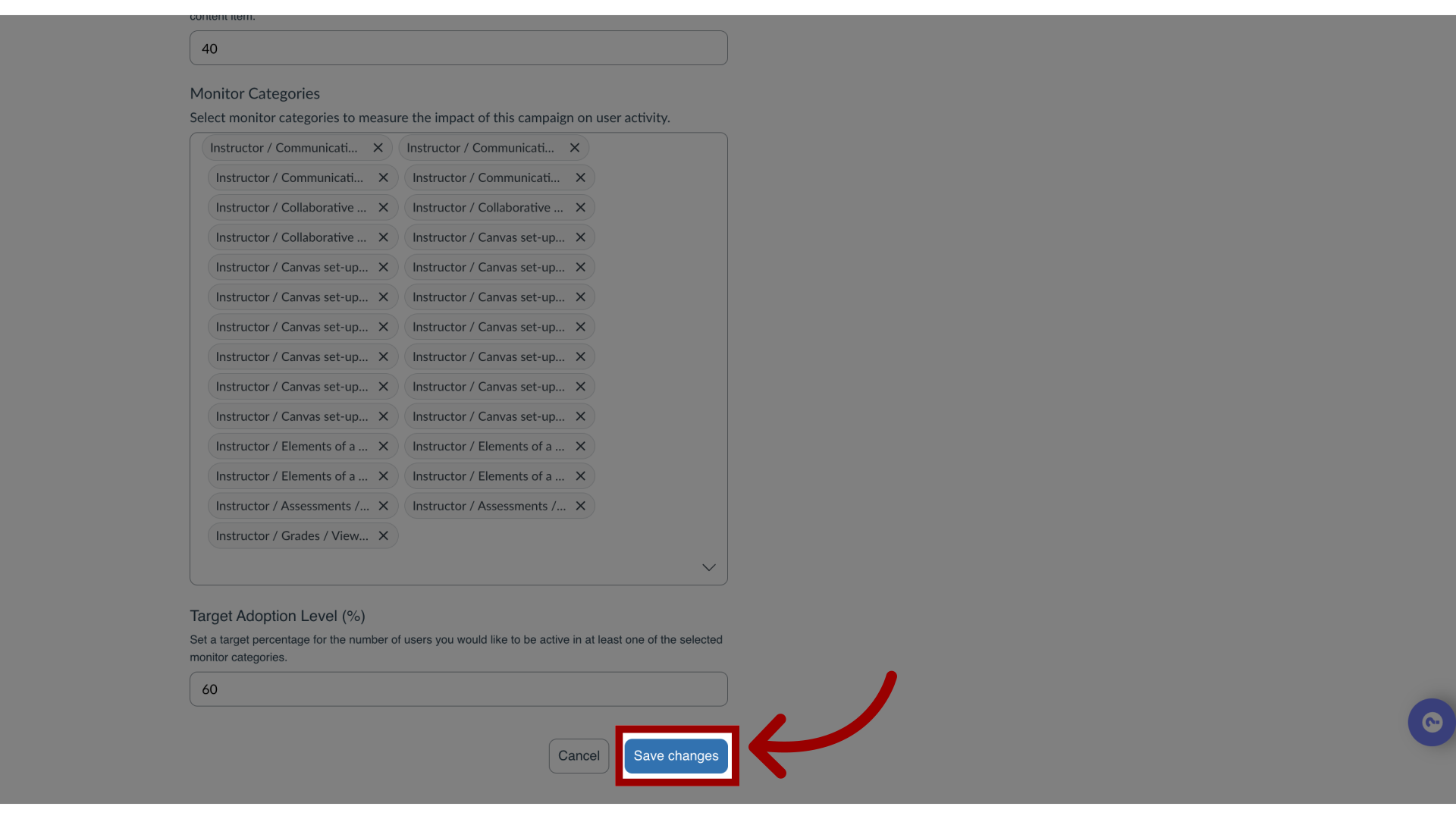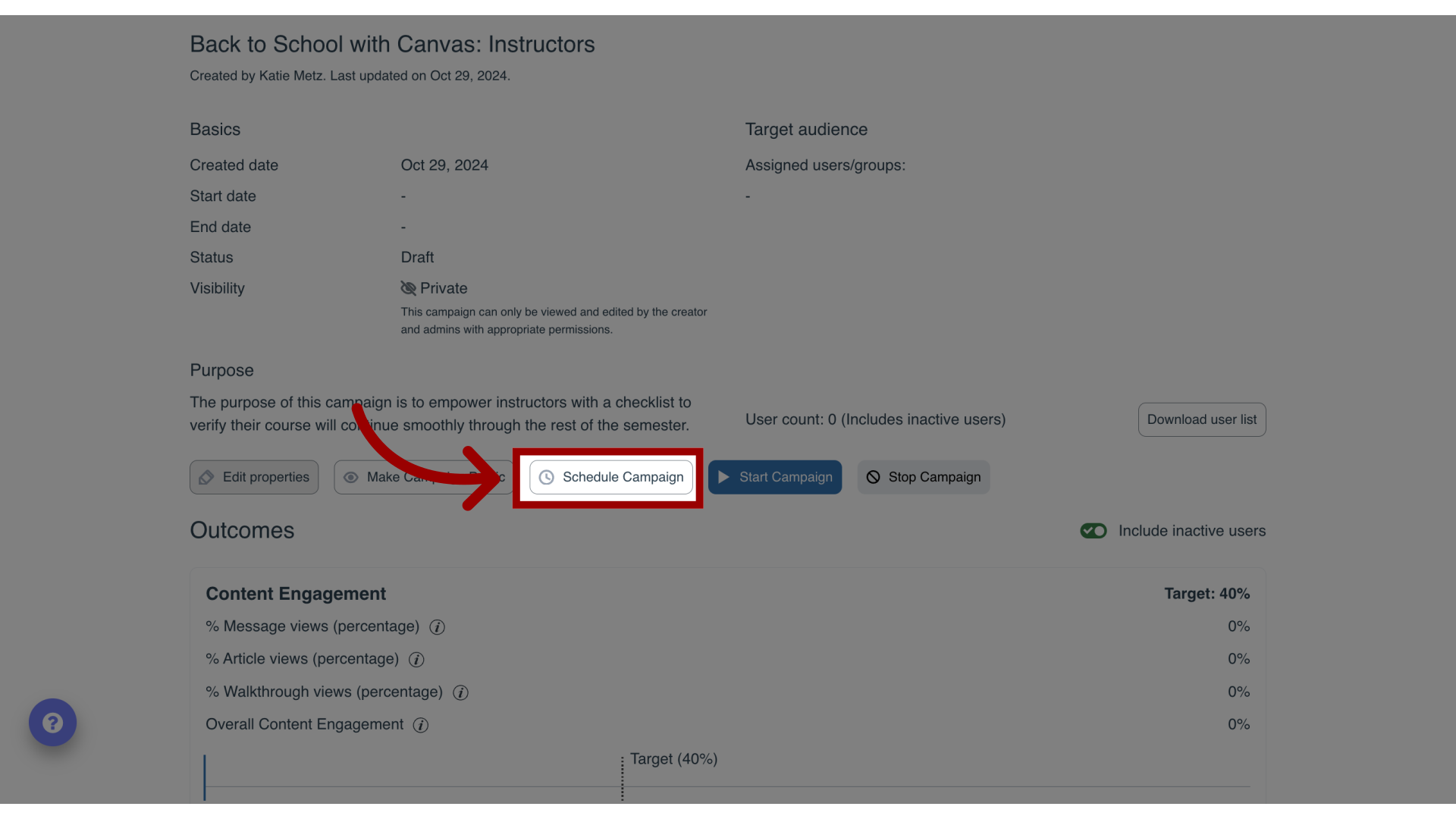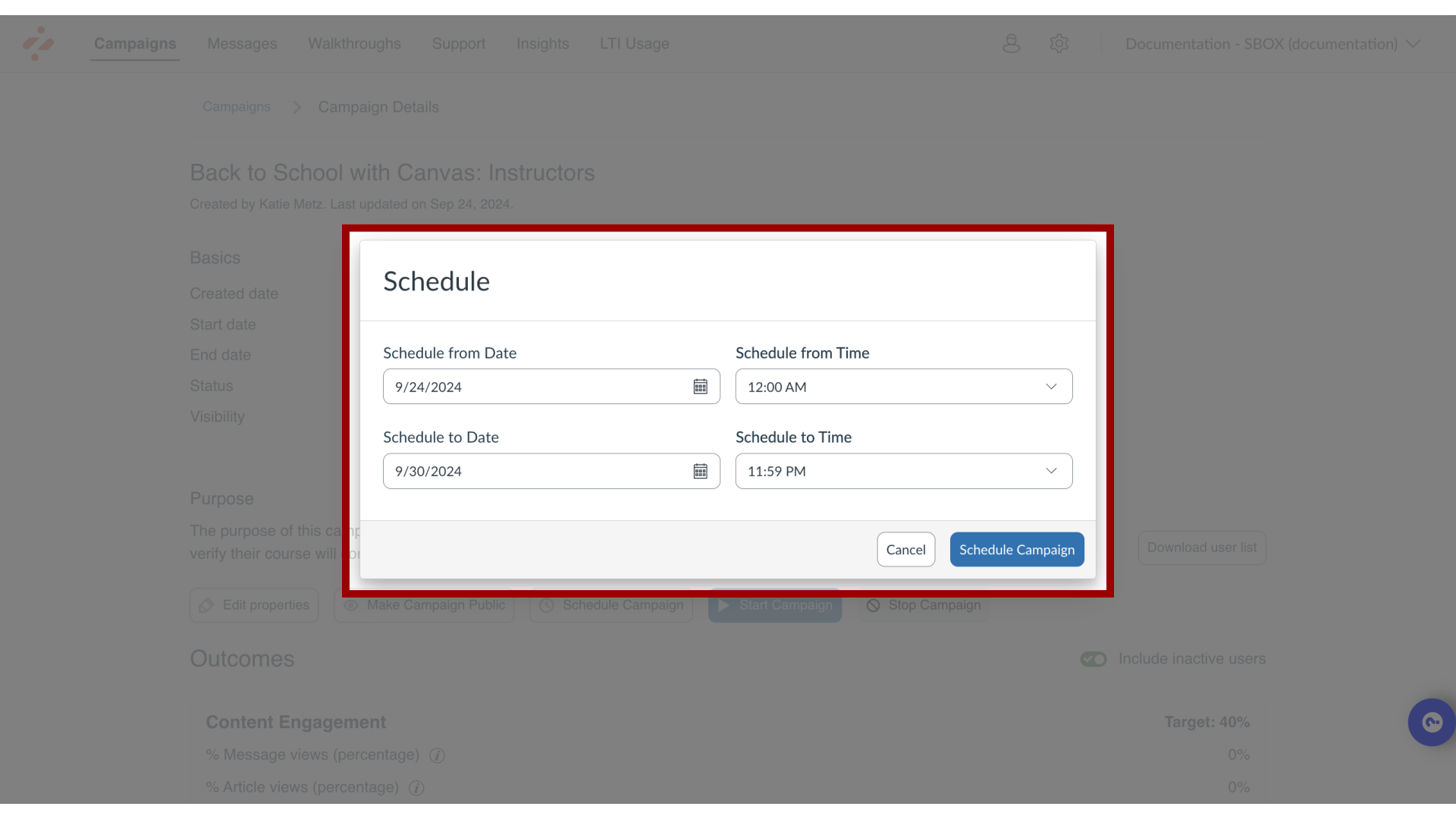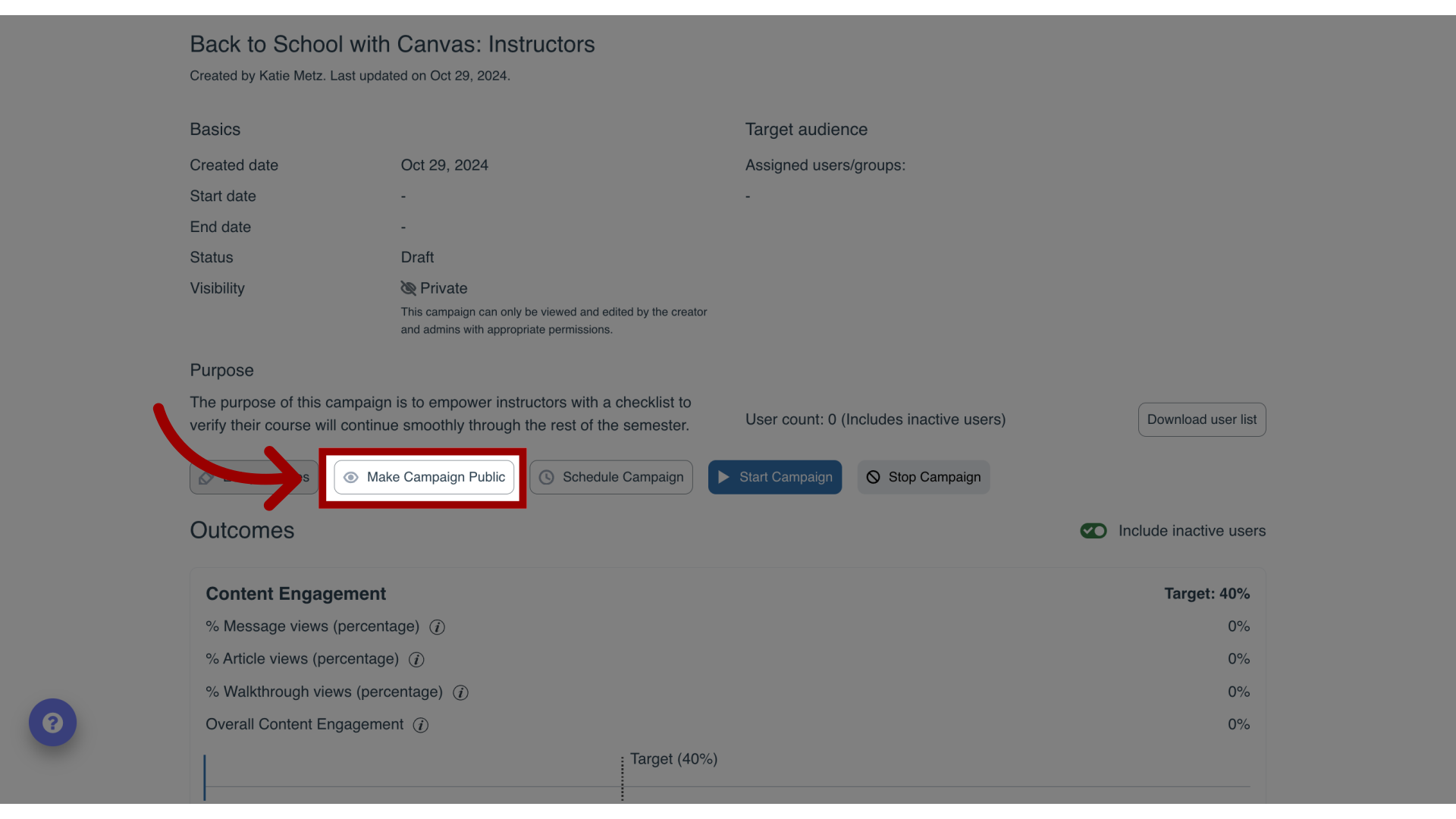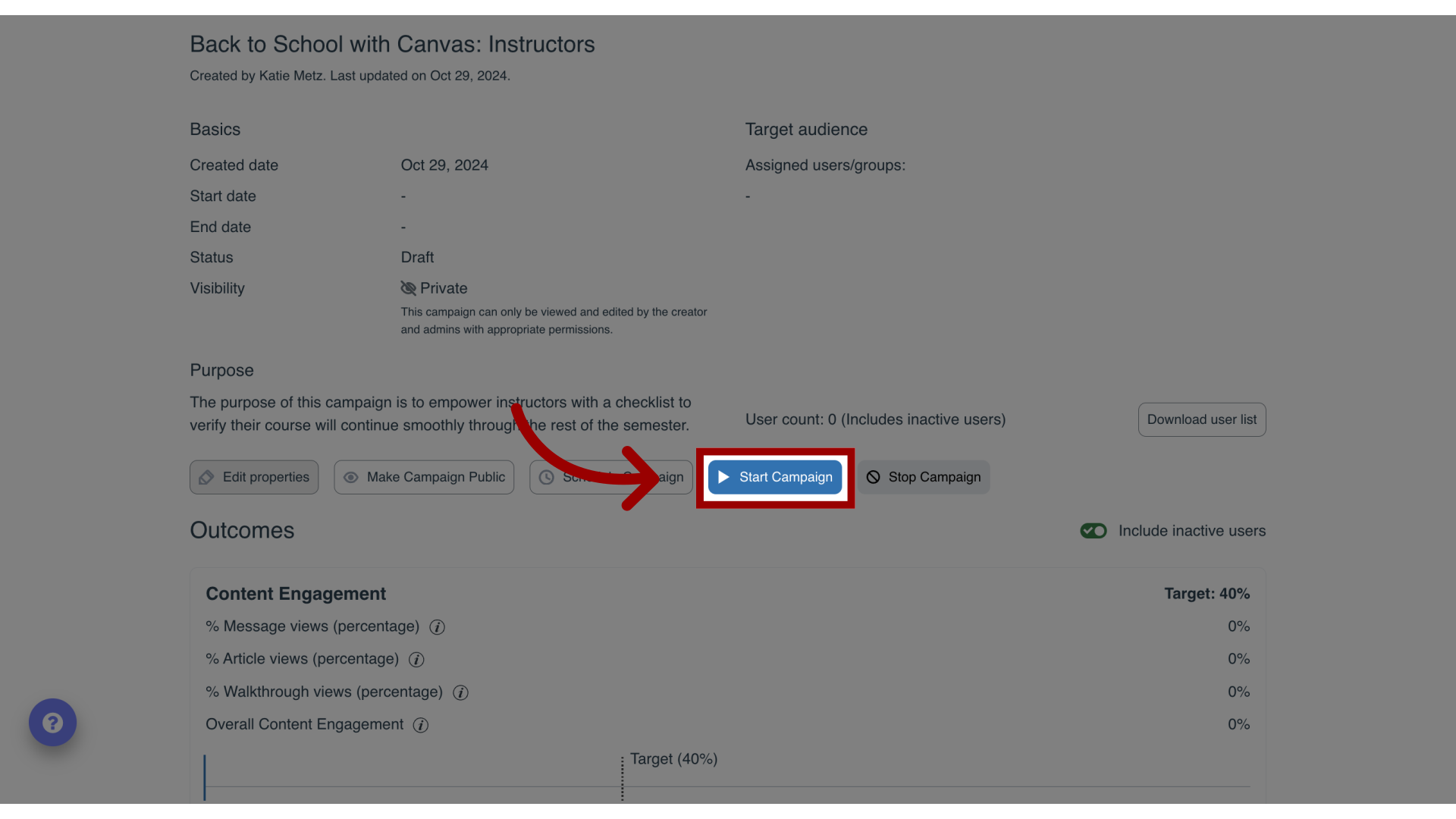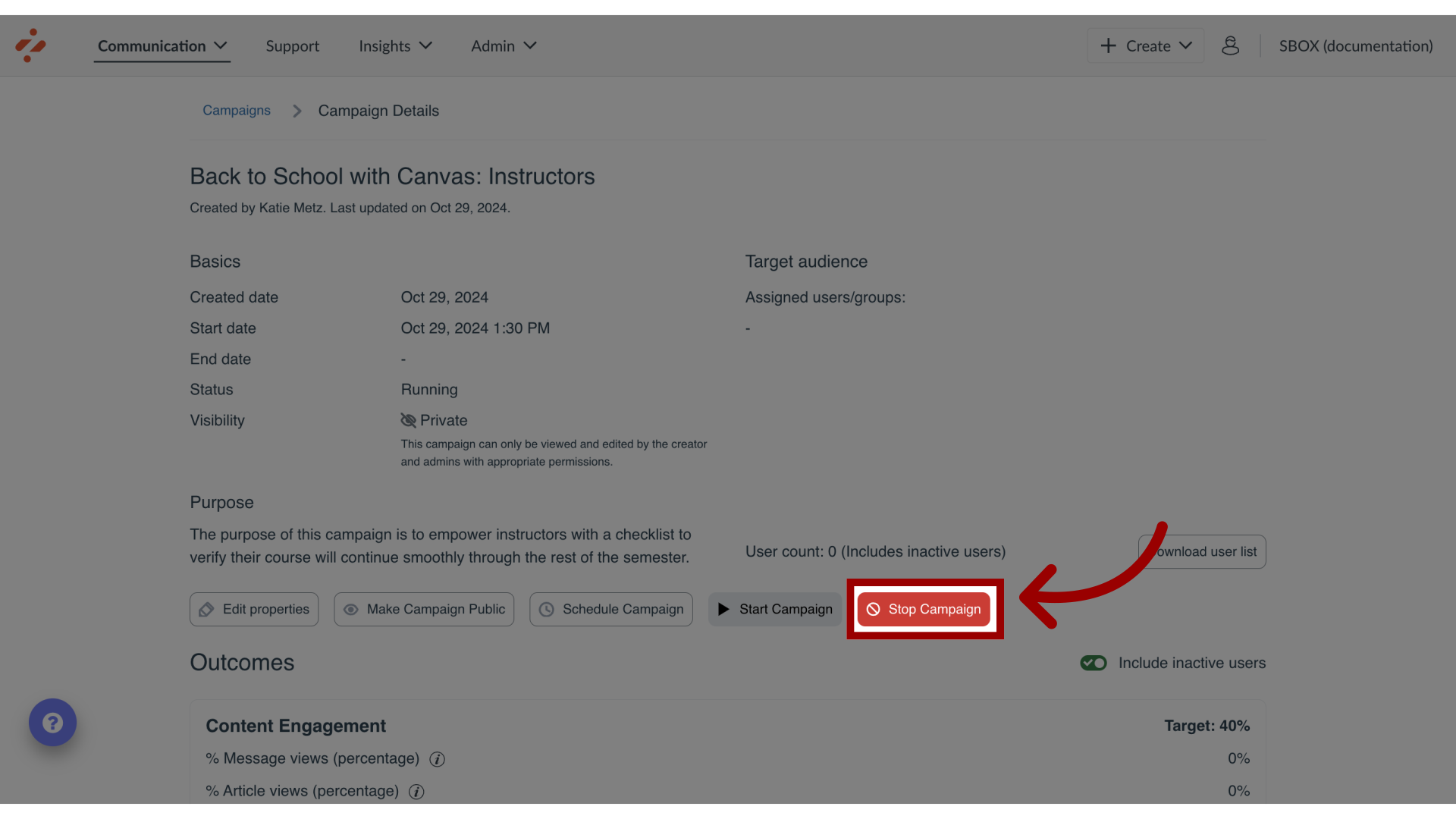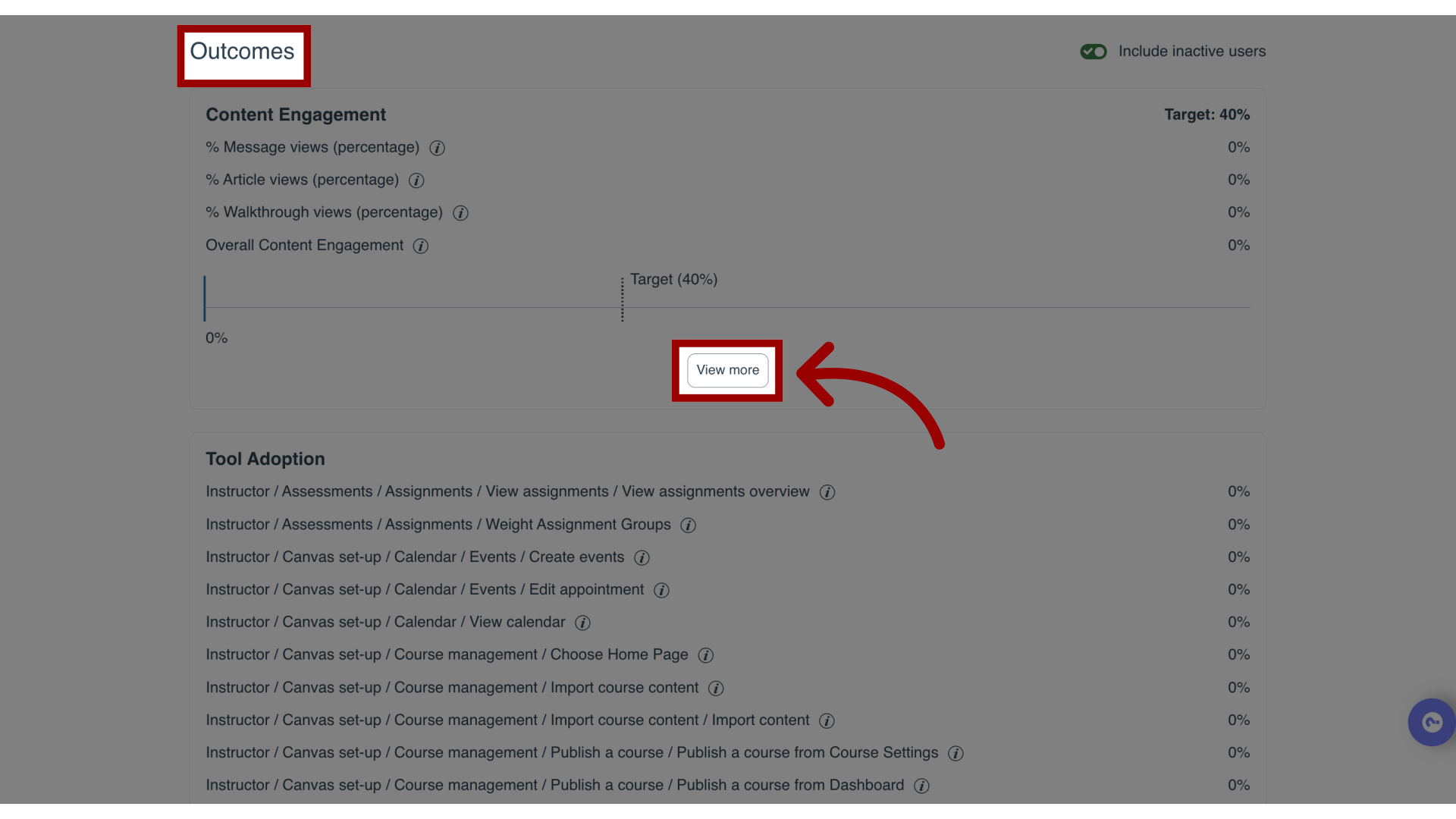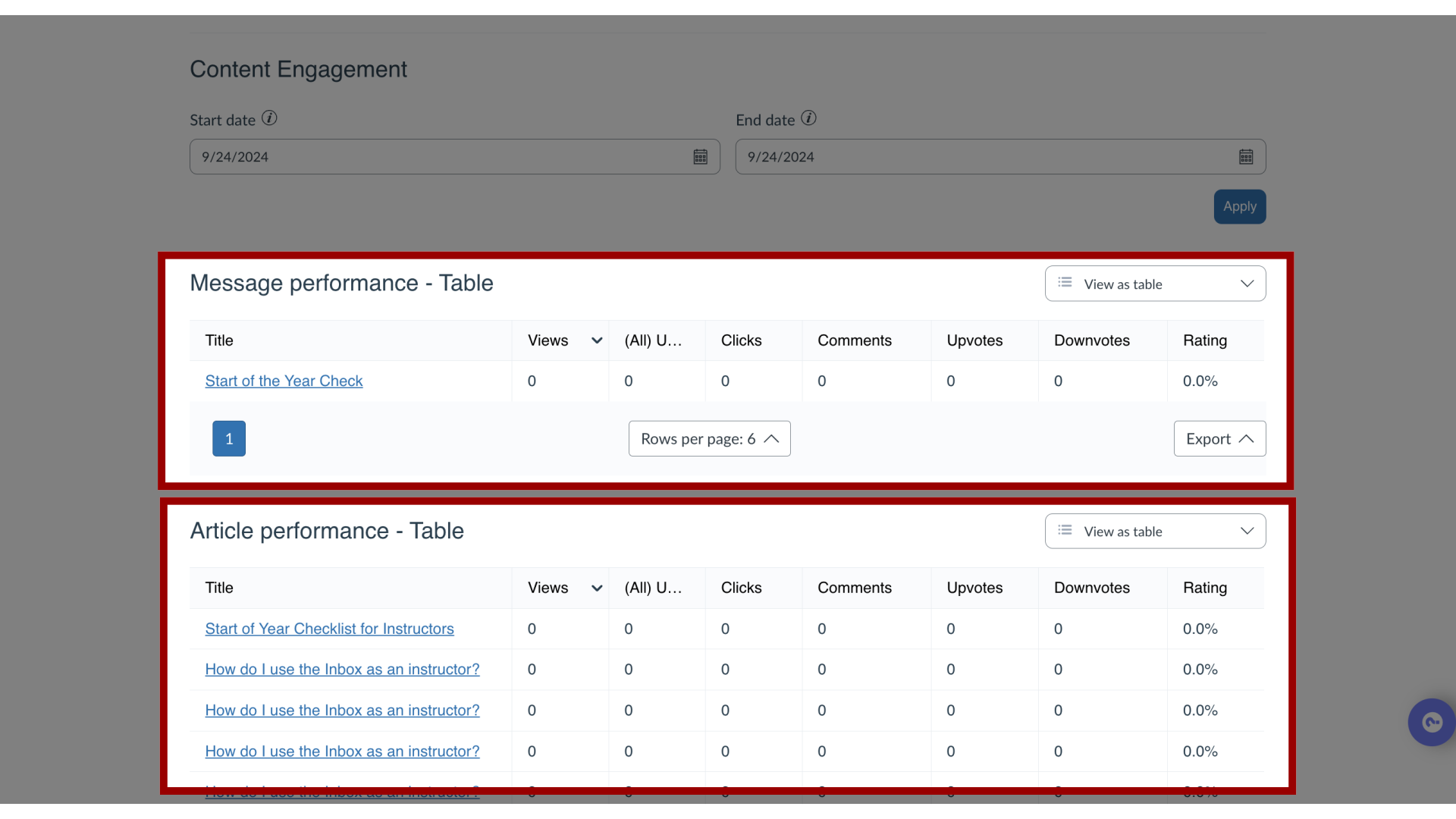How do I use campaign templates in the Impact Dashboard?
Impact strives to help institutions maximize the value of their learning technology through just-in-time contextual communication. Our content team, consisting of educational technology experts, publishes helpful templated messages and articles around common themes. This pre-made content is delivered in the form of Campaign Templates.
Campaign Templates contain messages, articles, and activity monitors, which can be added to your dashboard with one click. You can use these campaign templates as a draft, customize them to fit your institution's needs, and then go live with them on your LMS. This article will show you how to use campaign templates from your Impact dashboard.
Canvas and Blackboard release help items also have recurring campaign templates. You can find information about how to use those campaign templates in the following articles:

